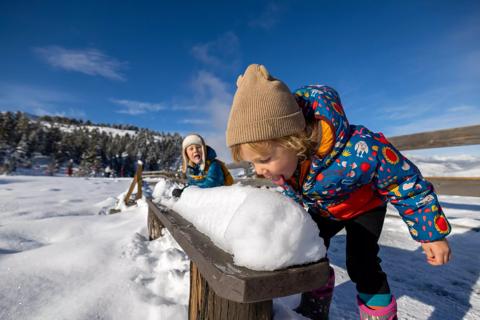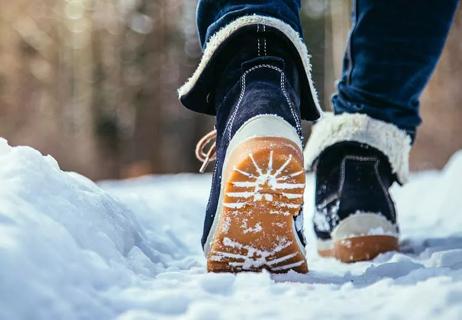Battling arthritis, dry skin, depression, weight gain

When the arctic winds blow, your health can suffer. What are the biggest challenges winter can bring? We asked six of our experts:
Advertisement
Cleveland Clinic is a non-profit academic medical center. Advertising on our site helps support our mission. We do not endorse non-Cleveland Clinic products or services. Policy
“Dry skin and the itching it causes are very common during winter,” says dermatologist Christine Poblete-Lopez, MD. To combat them, she recommends:
To minimize dry skin all year, avoid long, hot showers, she says. Use warm, tepid water instead. Apply body lotion within three to five minutes to seal in moisture.
“Winter tends to bring on more arthritic pains,” says orthopaedic specialist Meredith Konya, MD. “Cold and wet weather, along with changes in barometric pressure, are the most frequent culprits.”
To minimize the impact of cold weather on joints, dress warmly and in layers, she advises. When going outdoors, wear mittens, socks and a hat.
Staying active throughout winter is good for your joints. Try cold-weather-friendly activities like walking indoors, swimming and aerobics classes.
Advertisement
You can also consider vitamin D supplements. “We don’t get enough vitamin D from the sunlight in the dreary winter months,” Dr. Konya says.
For some people, winter’s grayness, lack of sun and short days wear on the psyche. “It’s the time of year people with seasonal affective disorder (SAD) find most challenging,” says psychologist Scott Bea, PsyD.
In SAD, depression surfaces in late fall or early winter, fading by spring or early summer.
Treatment involves purchasing a light that emits 10,000 lux. Thirty 30 minutes of light exposure per day — ideally in the morning — are enough to lift mood. “Light therapy is effective for about 70% of those who use it as prescribed,” says Dr. Bea.
Also, not being able to be as active or not seeing your friends and family as often in winter can dampen anyone’s spirit. “We can all benefit from finding ways to keep our bodies moving and to liven up our social calendars,” says Dr. Bea.
Fever, chills, head congestion, postnasal drip and cough — and sometimes nausea, vomiting or diarrhea. Each winter, this constellation of symptoms brings patients to family medicine physician David Brill, DO.
“Respiratory and flu-like illnesses are the most common acute illnesses we see,” he says. “The overwhelming majority are viral and do not require antibiotics.”
When should you visit the doctor? Only if you’ve been sick for more than 10 days OR you can’t function well due to persistent shortness of breath, high fever, etc.
Your doctor will likely recommend rest, fluids, a bland diet and medications for specific symptoms. To stay healthy, follow this decades-old advice, says Dr. Brill: Get proper rest, eat a healthy diet, wash your hands often, reduce stress, and exercise.
Putting on weight between Thanksgiving and New Year’s prompts many people to start working out out again. Check with your doctor before you begin, advises exercise physiologist Katie Lawton, MEd.
“For specific advice on the right routine, speak to an exercise professional,” she says. “No two people are alike, so all exercise and workout routines should be customized.” A customized workout will factor in your:
“Age should not determine which exercise is safe or effective for you — you should exercise to your ability,” says Lawton.
Generally, 150 minutes of moderate-intensity cardiovascular exercise are recommended per week. “As long as you exercise for 10 continuous minutes — even walking — it’s cardio,” she notes. Add resistance training at least two days a week (not back-to-back), and stretch daily, or as needed.
Advertisement
You don’t have to be a mountain climber — the very young, the elderly and the chronically ill are susceptible to frostbite, too.
“The colder it is, the quicker frostbite can develop,” warns emergency medicine specialist Tom Waters, MD. In frostbite, water in the skin’s soft tissues (typically the fingers, nose, toes and face) starts to freeze.
“As damage continues, you can ultimately lose fingers, toes and extremities,” he says. Anyone with symptoms — including pain and skin discoloration — should get inside quickly, then head to the emergency room.
“Warm up those extremities and keep them warm. Don’t let them re-freeze,” stresses Dr. Waters. “A doctor’s examination is vital. Damage is often more severe than it appears.”
It’s best to stay indoors in very cold weather. If you venture out, cover your hands, ears and face, and keep clothing dry.
Adopting these healthy habits should help you minimize winter’s hazards, and thrive — not merely survive — in the cold months.
Advertisement
Learn more about our editorial process.
Advertisement

If the flakes are undisturbed, pristine white and come from the top layer, it’s typically safe to indulge in a scoop

Bottom line? Dress warm, be careful and plan ahead to get the most out of the season

Sneak in exercise when you can, pack your own lunch and make time for mental health

Taking slow, short steps and wearing proper footwear can go a long way in preventing falls

With planning and precautions, you may be able to keep winter health issues at bay

Some heat escapes if you don’t wear a hat, but it’s not as much as you might think

How to keep kids warm, healthy and safe

The short answer from an emergency medicine physician

Type 2 diabetes isn’t inevitable with these dietary changes

Applying a hot or cold compress can help with pain